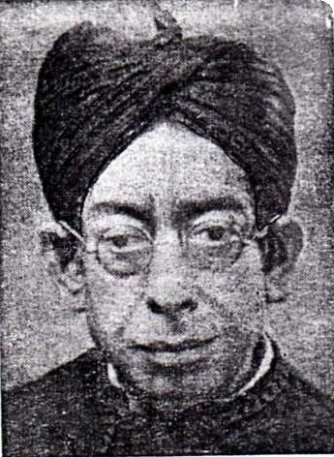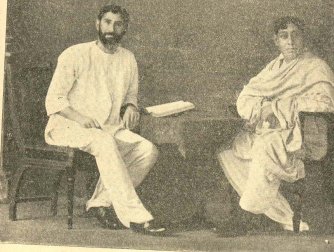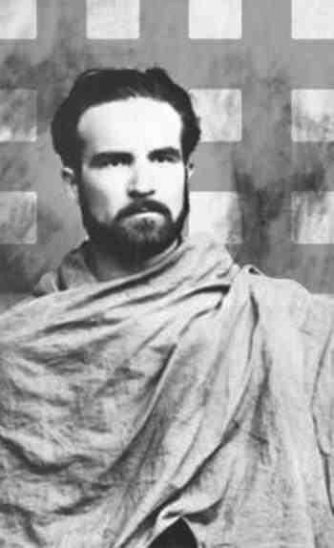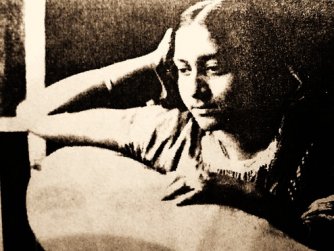| Library / Biographies |
Surendranath Dasgupta Biography

Surendranath Dasgupta Surendranath Dasgupta was one of the most outstanding scholars India has ever produced.
He was born in October 1887 in Kushtia, Bengal (now in Bangladesh) in a Vaidya family of eminent sanskritists and āyurvedic doctors.
From an early age he showed signs of extraordinary abilities: “During the ages of five to eight, when I had a very elementary vernacular education and no knowledge of Sanskrit or English, I could, in some intuitive manner, explain the purport of the Sanskrit verses of the Gītā. I could also demonstrate the various Yogic postures (āsanas) and also give practical instruction to people regarding the complicated processes of internal and external washings technically known as the dhauti by the Yogins. I could also give pretty satisfactory answers in a simple manner to most questions on Indian philosophy and religion. As a result therefore my house was crowded from morning till night with ardent enquirers seeking instruction on Indian religion and philosophy. At the age of seven I also delivered a lecture before a large gathering in the Theosophical Society Hall in Calcutta […].”
He studied at Ripon College in Calcutta, and graduated with honors in Sanskrit. Later, in 1908, he received his master's degree from Sanskrit College, Calcutta. He got a second master's degree in Western philosophy in 1910 from the University of Calcutta.
One year later he was appointed as assistant lecturer of Sanskrit at the Rajshahi College and within a short time he became professor of Sanskrit at Chittagong College.
Dasgupta had taken the Griffith Prize in 1916 for his essay on Patañjali’s philosophy and obtained his doctorate in Indian philosophy in 1920. Maharaja Sir Manindra Chandra Nandi now urged him to go to Europe to study European philosophy at its sources, and generously bore all the expenses of his research tour (1920–22).
Dasgupta went to England and distinguished himself at Cambridge as a research student in philosophy under Dr. J. M. E. McTaggart. During this time the Cambridge University Press published the first volume of the History of Indian Philosophy (1921). He was also appointed lecturer at Cambridge, and nominated to represent Cambridge University at the International Congress of Philosophy in Paris.
His participation in the debates of the Aristotelian Society, London, the leading philosophical society of England, and of the Moral Science Club, Cambridge, earned for him the reputation of being an almost invincible controversialist.
Great teachers of philosophy like Ward and McTaggart, under whom he studied, looked upon him not as their pupil but as their colleague. He received his Cambridge doctorate for an elaborate thesis on contemporary European philosophy.
In 1922 the first volume of his History of Indian Philosophy by the Cambridge University Press and in the same year his General Introduction to Tantra Philosophy was published in Calcutta were published.

Yogendra with Dr. Surendranath Dasgupta in 1924In early 1923 Dasgupta met Shri Yogendra, one of the important figures in the modern revival of Hatha Yoga, both in India and United States.
Yogendra felt the need for a scientific and academic corroboration for all he had learned from his guru Madhavdasji, prior to his travel to the West.
According to Yogendra’s biographer, Dasgupta and Yogendra “ had quite a few successful philosophical exchanges, the theorist could extend his empirical mind to investigate the problems posed by the young mind, but when it came to the practical aspects, the learned Professor was unable to do much.” (Surama Dasgupta later will write that Dasgupta “kept this [mystical] side of his life as a guarded and sacred secret.”)
In 1924 Dasgupta was promoted to the Indian Education Service, as Senior Professor of European Philosophy, Presidency College, and Lecturer in Philosophy at the University of Calcutta. His work Yoga as Philosophy and Religion appeared also in 1924.
The impressions that he had made by his speeches and in the debates at the Paris Congress in 1922 secured for him an invitation to the International Congress at Naples in 1924, where he was sent as a representative of the Bengal Education Department and of the University of Calcutta ; later on, he was sent on deputation by the Government of Bengal to the International Congress at Harvard in 1926.
In that connection he delivered the Harris Foundation lectures at Chicago, besides a series of lectures at about a dozen other Universities of the United States and at Vienna, where he was presented with an illuminated address and a bronze bust of himself. He was invited in 1925 to the second centenary of the Academy of Science, Leningrad, but he could not attend for lack of Government sanction.
Under the auspices of the Norman Wait Harris Foundation he delivered six lectures on Hindu spiritual thought, published in 1927 in Chicago as Hindu Mysticism.

Mircea Eliade, 1930, Rishikesh, Himalayas.In 1928 Mircea Eliade becomes Dasgupta’s student at Calcutta University to study Sanskrit on a scholarship provided by the Maharaja Sir Manindra Chandra Nandy de Kassimbazar.
Eliade wanted to study Tantra and practice yoga and Dasgupta promised Eliade that he would be introduced to yoga, but when they spent time together, he prefered to discuss the technical vocabulary of Sāṃkhya-Yoga, the history of yoga doctrines or the relationships between classical Yoga, Vedānta and Buddhism. Instead, Eliade was attracted to Tantrism and the various popular forms of yoga, as described in epic poetry, legends and Indian folklore.
In 1930 Eliade was invited to live in Dasgupta's house and worked on the index of Dasgupta’s "A History of Indian Philosophy", aided by his daughter, Maitreyī. Soon, Eliade realizes that he was in love and he imagined that the family wanted the two of them to be together. But in September Maitreyī told him that the family has learned about their idyll. Immediately he was asked to leave Dasgupta residence.
In 1931 Dasgupta presided over the Great International Buddhist Religious Conference held in Benares, and he was appointed Principal of the Sanskrit College, Calcutta. While he remained in this position (until 1942) he delivered many lectures on Indian philosophy and culture as a visiting professor between 1935-1936 and again in 1939 at Rome, Milano, Breslau, Königsberg, Berlin, Bonn, Köln, Zürich, Paris, Warsaw and universities of England.
In 1936 Dasgupta was invited at the Rome Conference of the International Science Congress in 1936 and presented a lecture on scientific practices in Ancient India. He represented India at the International Congress of Religion in London in 1936 and in Paris in 1939.
In 1939 he visited Rome and was given a military reception by Mussolini as a state guest and the University of Rome presented him with an honorary D.Litt. On that occasion he gave a lecture in Italian on the basic theory of Indian art.
He was honored by being made a fellow of the Academy of Science of Warsaw as well as a member of the Royal Society of Literature, London. He also became Honorary Member of the Poets’ Club in London.
Dasgupta was decorated with the title of Commander of the Indian Empire by the Government of India and upon his retirement from the post of Principal of the Sanskrit College in 1942 he was appointed Head Professor of the Department of Philosophy of the University of Calcutta.
After retirement in 1942 he donated his collection of almost 15000 books to the Hindu University of Benares, where it is kept as the Dasgupta Collection. The Maharaja Sir Manindra Chandra Nandy of Kassimbazar had generously sponsored him with enough funds to – as Mircea Eliade said - “build the richest collection of books on philosophy and religion that I had ever seen”.
His student Pareshnath Bhattacharya wrote: “The width of his knowledge was wonderful, unfathomable, he had a tremendous horizon. He could go further and further, and still the horizon would recede. In width of knowledge, Dasgupta surpassed everybody else. […] Dasgupta could also foretell many things, without having practised any Yoga. He was a genius.”

Maitreyī Devi, 1930Dasgupta’s daughter, Maitreyī, wrote: “My father’s talents are varied; his qualities are immeasurable. There is no one to equal him in erudition. Impenetrable Sanskrit texts he deciphers and interprets in a minute. He has never needed help to go into the depth of abstruse philosophy written in archaic Sanskrit. His memory is sharp. He has read all the books in his library, some six or seven thousand volumes. His powerful personality awes even learned pandits – he can defeat anyone in argument, he can prove to any man that that man does not know even the proper use of dental and cerebral “n”.”
But Dasgupta was quite tyrannical figure, as his daughter wrote: “It is not only in our house but in every household where the master of the house is the most important. He is ninety five percent, and all the others together make up five percent only. That means that his wish, his convenience is more important; others hardly matter. In our family this attitude is stronger than in other families; the master of the house is also the ruling deity. […]
The master of the house is the bread-earner, so he also had absolute right to dismiss all other views and lead every member of the family according to his own views. Maybe this is a necessary and useful custom to maintain discipline in a large joint family, but it invariably turns the ruler into an arrogant and selfish person. He considers himself to be a god ruling over that particular household. But actually, he is no god; he is just a human being full of weaknesses and bound down by the pleasures and sorrows of life like any other insignificant member of the family. Just as an omnipotent king is for a country, so is the master of a household for its members, supervising the destiny of their inferiors. Especially if that man is a man of qualities – his power becomes absolute.”
In 1941, Dasgupta allegedly had an affair with Surama Mitra, a very talented student who had been working with him for the previous ten years. The scandal created - according to some witnesses through actions of his daughter Maitreyi as revenge for her father prohibiting her relationship with Mircea Eliade - made Dasgupta to abruptly lose his family, friends, reputation and fame.
The distress made him suffer a heart attack. In 1945 Surama and Dasgupta got married, Dasgupta quit his position and left India for England with his new wife. 1
In 1945 he had been invited to join the University of Edinburgh as a professor of Sanskrit but being in very bad health due to heart trouble, he stayed at Cambridge where, at the Trinity College, he held his last lecture in public.
He spent five years in Cambridge, facing all kinds of hardships in post-war England and being confined to his bed most of the time. Still Dasgupta tried to work as much as possible, assisted by Surama.
They returned to India in 1950 and moved to Lucknow where Surama was offered a post as professor of philosophy at the University. Dasgupta never returned to Calcutta and never met his family again. His greatest wish was to complete the last volume of his History of Indian Philosophy and he nearly succeeded: after finishing the main part of it he died on December 18, 1952.
After Dasgupta’s death, Surama arranged that previously unpublished manuscripts got published and did her best to show what an extraordinary person Dasgupta was. She wrote in her book An Ever-Expanding Quest of Life and Knowledge:
“Yet, there are persons who are different from the rest. They have, as it were, an extra-fine sensitiveness, an intellectual and moral and spiritual insight into things, and a different set of values. They come as prophets, saints, men of extraordinary ability. Though they belong to the human species, they are beyond the ordinary, and they have their finer sense of ideals and unusual strength to follow these up. […]
They have brought new light into the world, opened newer horizons, and discovered new dimensions of existence. They are never bound by any one well-laid pattern of society; they belong to all ages and to humanity as such. They have enriched human history by their life and thought. Professor Dasgupta was one such eminent man. […]
He could […] be called both a seer and saint […] I never saw him angry, diffident or perturbed. He seemed to be riding on the waves of an angry, tempestuous sea in a calm, unruffled manner. Never did he lose control of the situation and never did he lack in optimism and courage. […] In a sense he was unaffected by suffering or sorrow.”
And:
“His faith in God and mental strength were both unshakeable. He was never depressed, never afraid. Every new situation was a challenge to him, and he rose equal to the occasion. Since he was never at a loss, never afraid, we depended on him in everything and knew that there was nothing to fear.”
Dasgupta was quite secretive about his mystical experiences, but Surama later described her observations about his yogic trances:
“These occurrences also seemed to be anti-biological in this that all physiological and mental functions seemed to have been arrested. If permitted to be in such states for a long period (which he was not, because we were fearful of any harm to his physical health), his whole body seemed to have become stiff, and he seemed to be unconscious or completely oblivious of the immediate surroundings. The longer he stayed in this state the more difficult it was for us to rouse him and call him back to the present environment. That is why we were alerted whenever there were some indications of such a situation coming about. […]
There were other kinds of situations when he would softly hum a tune to himself and pass into samādhi. In these cases, it was a state of deep, quiet contentment and bliss. We could make out something of this from the expression on his face. It was always a very sweet and a composed expression, and some kind of ineffable peace relaxed his lips into a smile. The whole countenance irradiated peace and deep contentment […] any stimulus in the form of nature’s beauty or a devotional song or the image of Lord Krishna, which he loved very much, was enough to make his mind stop functioning and send him deep down into a sub-conscious state of awareness. This passing off into samādhi or a yogic state of mind was very natural and spontaneous with him. He did not have to do anything for this, rather it came on unawares to him, as it were, and caught him in its flow. […]
Any devotional song would start in his mind a kind of a longing or a pining for something unattainable. This longing would send him out of the present environment and rouse deeper and deeper longings associated with the pang of unfulfillment of attaining the highest end he sought for and also an indefinable sweetness associated with it. […]”
About his samādhi experiences in relation to the Yogasūtra, Dasgupta said:
“Time to time when I had experienced spontaneous, deep trance-states, I realised one truth and that is this: the mind goes deep within, away from the objects and interests of everyday life and then becomes completely detached from it. Just as when the body gets tired with the continual use of its muscles, so also the mind spends itself up in the continuous thought-processes and conflicts and activities involved in them. When the mind, therefore, withdraws itself from these and rests within, it realises the exhaustion that comes out of the emotions of anger, envy, intolerance, egoism and the like which it does not otherwise understand because it gets itself involved in them. Patañjali has declared attachment, hatred, egoism and the like to be ‘afflictions’ and those mental states which are affected by these, as ‘afflicted states’. I have realised the truth of this. I have seen clearly when I came back from trance-states how much the passions and emotions of our everyday life are really useless afflictions. Therefore, on our waking up from samādhi (trance-states), our usual ties and interests become loose as it were and their harmfulness becomes apparent. Just as a person who has taken a clean, refreshing bath in clear water, feels aversion for bath-oil if he has to soak himself again in this, so does a man feel when he wakes up from the state of deep meditation and comes to the ordinary conscious life. That is why this illustration has been used by the poets and the scriptures. A man coming back from samādhi realises the futility of all worldly achievements.”
But he didn't abandoned the world to become a recluse. In letters to Surama he said:
“These two […] should be blended together in life […]. One can be a dweller of both the worlds, the day-to-day life and the other beyond this, at the same time. I may be completely detached, yet deeply involved with all things concerning life.”
“Had I given myself completely to the deep states of meditation, how could I be so close to you and how could I be so deeply interested in all that happens to every one of you?”
Selected Writings
• “The Study of Patanjali,” Calcutta: University of Calcutta, published 1920.
• “A History of Indian Philosophy.” Vol. I-V. First volume published by Cambridge University Press, 1922.
• “The Kapila and the Pātañjala Sāṃkhya (Yoga)”, 1922
• “Yoga as Philosophy and Religion,” London, 1924.
• “Yoga Mysticism.” In Hindu Mysticism, 1927.
• “Yoga Philosophy in Relation to Other Systems of Indian Thought,” Calcutta: University, 1930.
• “The Philosophy of Humanity,” In The Philosophy of Life, Indian Council of Philosophical Research, 1936.
• “Philosophy of Dependent Emergence” in Contemporary Indian Philosophy, 1936.
• “Philosophical Essays,” Motilal Banarsidass, 1941.
• “Yoga Psychology,” 1941.
• “An Interpretation of the Yoga Theory of the Relation of Mind and Body,” 1941.
Published posthumously
• “Fundamentals of Indian Art,” Bharatiya Vidya Bhavan, 1954.
• “Religion and the Rational Outlook,” Allahabad: Law Journal Press, 1954.
• “Natural Science of the Ancient Hindus,” Indian Council of Philosophical Research, Motilal Banarsidass, 1987.
• “Theories of Cosmic Changes,” 1987.
Footnotes
1. Dasgupta never lawfully divorced his first wife (Himani), so the marriage to Surama was never legal.





